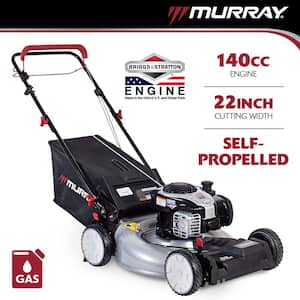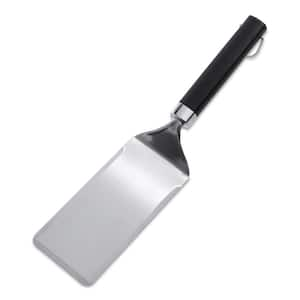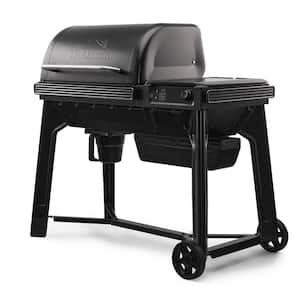Do you have what you need to make your garden grow?


Garden Center
Store Hours
Mon-Sat:
6:00am - 10:00pm
Sun:
7:00am - 8:00pm
Curbside:
09:00am - 6:00pm
Location
Popular at Your Garden Center
Summer Garden Center Supplies
Popular Garden Center Live Plants
Garden Project Calculators
;Resize=(703,395.44))
Grass Seed Calculator
When you're ready to seed your lawn, our calculator helps you estimate the amount of grass seed you'll need to get the job done.
;Resize=(703,395.44))
Mulch Calculator
Enter your preferred material, the square footage and mulch depth of the coverage space for accurate results.
;Resize=(703,395.44))
Fencing Calculator
We'll calculate the amount of fencing you should purchase based on your property needs.
Shop Outdoor and Garden Brands
Frequently Asked Questions About Your Store
What do I do about all these weeds?
Weeds are likely poking through in the garden beds, even if you put down a landscape liner fabric or mulch to keep them at bay. Be sure to get them before they go to seed. Pull weeds from the root in edible flower or vegetable gardens, and dig up the roots if the weed snapped off without them. If you choose to treat weeds with weed killer, find one that's safe for pollinators and pets — and wear durable rubber gloves and a respirator to ensure that it doesn't touch your skin or your lungs.
Is brown grass dead?
It could be, but it's likely napping during those summer temps. Cool-season grass goes dormant in the summer. It isn't usually dead — just brown and crispy. Here's how you can check on it: If you can easily pull out a blade of grass with no resistance, it's time to plant new seed or sod because the grass is a goner. Water dormant lawns deeply once every week. Warm-season lawns need water every few days in the summer. Those lawns stay green if they're healthy. We have the lawn care you need for healthy warm-season and cool-season grass.
How often should I water the lawn?
If you can water during the early morning or in the evening, that's ideal. Watering during the heat of the day means a lot of the moisture will evaporate. This applies to whatever you've got growing: trees, flowers, grass, and gardens. Whenever you water, give all the plants a thorough drink, and don't skip it when it's not the perfect time. The plants still need water to live, regardless of the time on the clock. Depending on your lawn health, climate, and grass type, you may also want to look into adding a lawn fertilizer.
Should I fertilize my plants?
Once you've gotten your plants settled into the ground, make sure they stay hydrated and well-fed. Choose an organic or synthetic fertilizer that suits your needs and gives your garden a boost. You can even find one specially formulated for your plants, whether you need a vegetable fertilizer, fruit tree fertilizer, succulent plant food, or a general garden fertilizer. Follow the application instructions and don't add extra. Always water immediately after, as directed, so the plants won't be burned by the fertilizer.
How can I keep cool this summer?
When you need a break from relentless summer heat, shelter beneath a patio umbrella or covered gazebo. If you have sturdy structures like a house, make your own shade by attaching awnings and shade sails. But sometimes shade isn't enough because it's just too humid out. That's when a patio mister or misting fan can help cool the air and turn an uncomfortable afternoon into a relaxing day. Go back to lounging in the sun when that chilled air is ready.
Is there a quick patio makeover I can do?
Spending time with friends in gorgeous weather makes the season even more special. But you don't need to do a full backyard makeover or create your own patio conversation sets from scratch to do it. Even a tiny backyard refresh can make a big difference. New outdoor lounge furniture, rugs, or even outdoor string lights can bring character to a patio space.
Garden Project Ideas

Protect wood from carpenter bees with our guide on sealing surfaces, using traps, and applying safe pest control methods.

Check out our tips on banishing gnats indoors and out using traps, sprays, and moisture control to keep your home pest-free.

Safely remove poison ivy with our guide on protective gear, cutting techniques, and herbicide use for effective eradication.

Maintain a healthy lawn using organic methods like manual weeding, natural herbicides, and proper lawn care practices.

Grow apples successfully with our guide on choosing varieties, planting, pruning, and pest control for a bountiful harvest.

Cultivate thriving grapes with our step-by-step tips on site selection, trellising, pruning, and disease prevention.
The Home Depot Garden Center at Laguna Niguel
Shop the Garden Center Independence Day Sale
Greet Independence Day with a yard that's dressed to impress. Our big 4th of July Sale can help you do it. Freshly pruned hedges, cheerful flowers punctuating your gardens, and a gorgeous lawn that's growing green and lush can make your great outdoors feel like home. It's time to enjoy the festivities with your friends and family. With a yard like this, it's easy to create holiday memories to look back on — whether it's a luxurious day of lounging on patio furniture or a day-long feast of food cooked up just right on a new grill.
Celebrate Summertime Gardening
As we continue deeper into summer, your landscaping and garden will weather more sun and heat than earlier in the season. That means you'll need to consider how to keep things cool with proper tending and irrigation. Just like we can get sunburned, plants can dry out, grass can get scorched, and trees can lose their leaves prematurely. We've got advice to help you, your lawn, and your garden make it through the hotter months with flying colors.
Keep Your Lawn Tidy
As the weeks tick by, the grass seed or sod you planted will grow taller than what's ideal. Eventually, it'll need some maintenance to look fresh again. Keep the lawn in check with a riding lawn mower and a string trimmer to knock down any tall grass around buildings, sidewalks, or fences.
Bushes, trees, and shrubs climb toward the sun and lose their shape over time. In the summer, they'll be growing fast, filled with buds and blooms before you know it. Trim wild branches to the shape and size you want with garden shears and hedge trimmers. It's best to leave tree topping and major tree maintenance to the pros, but you may want to use a pole saw for minor trims and a chainsaw for small bushes and trees.
Care for Your Trees and Shrubs
When you're watering your flower garden, don't forget about the shrubs and trees. They may need less watering than delicate flowers or vegetable plants, but they can still get dry and parched in the summer heat. It's not difficult to learn how to water trees and shrubs — just be sure to aim the water at the roots. It'll help prolong the greenery and keep it from turning yellow or brown. Also, check for damage on your trees and shrubs. Pests can destroy your greenery.
Look for leaves full of holes, spots on bark or leaves, or strange raised scars on the bark. When your leaves look like lace, something is eating them. Spots may indicate a number of issues ranging from fungus to bugs. Those scar-like lines on tree bark could mean your tree is infected with borers, which are insects that lay eggs inside the bark and then burrow out after they hatch. Research and care for any of these issues as soon as possible, as they may end the life of your tree or shrub.
Grow Your Own Herbs
For fresh flavors to accent your homegrown produce, try herb gardening. They're generally low-maintenance. It's easy to learn how to grow herbs indoors, but you can raise herbs outdoors, too. If you grow herbs outdoors, stick to heat-loving herbs that'll endure the summer temperatures, and consider a hanging herb garden.
Planting herbs in the ground can be tricky, as many of them — especially mint — are invasive and will take over your lawn. So just keep them in decorative pots on a porch, window sill, or even in wall planters. Herbs also work well in a hydroponic garden, which doesn't use soil. Instead, they grow in a mixture of sand, rock chips, or perlite.
Vines as Decorative Shade
Set up vines to climb an arched arbor or trellis to provide both beauty and shade. Vine plants that are native to your area are a good choice for success and attract pollinators. Wisteria, jasmine, and ivy are common options for creating a stunning archway. Remember to match your vine plants to how much sunlight you receive, as some like full sun and others don't. As a bonus, many vines put out sweet-smelling flowers, so you can enjoy a delightful fragrance as you cool off in the shade.
Find Your Summertime Supplies Today
No matter if your perfect summer includes gardening, relaxing, or completing those outdoor DIY projects, we've got the supplies to keep you covered. Make the most of these long evenings and early mornings to enjoy all the season has to offer. Shop online at your leisure, on our app anywhere you like, or in the aisles of your Laguna Niguel nursery.
Nearby Stores
Find Another Store
27952 Hillcrest
Mission Viejo, CA 92692
2.90 mi
Mon-Sat: 6:00am - 10:00pm
Sun: 7:00am - 8:00pm
24332 El Toro Rd
Laguna Hills, CA 92637
3.13 mi
Mon-Sat: 6:00am - 9:00pm
Sun: 7:00am - 8:00pm
23651 El Toro Road
Lake Forest, CA 92630
3.77 mi
Mon-Sat: 6:00am - 10:00pm
Sun: 7:00am - 8:00pm






)
)
;Resize=(300,300))
/17_514245_S_012_Product%20Image%20(square).jpg?im=Resize=(300,300))
)
/2023_P2_Rain_Barrels_Product%20Image%20(square).jpg?im=Resize=(300,300))
;Resize=(300,300))
;Resize=(300,300))
)
)
;Resize=(300,300))
)
)
)
)
;Resize=(300,300))
;Resize=(300,300))
)
)
)
;Resize=(300,300))
;Resize=(300,300))
)
;Resize=(300,300))
;Resize=(300,300))
)
/12_SOIL_B_0420_Social%20media%20(square).jpg?im=Resize=(300,300))
;Resize=(300,300))
;Resize=(300,300))
;Resize=(300,300))
)
;Resize=(300,300))
)
;Resize=(300,300))
;Resize=(300,300))
/18Patio_Camden_Seagrass_5pcSeating_Planters_302468736_DTL3_L_Social%20media%20(square).jpg?im=Resize=(300,300))
;Resize=(300,300))
)
;Resize=(300,300))
;Resize=(300,300))
)
)
.jpeg?im=Crop,rect=(363.69230769230774,1.2307692307692308,958.7692307692308,958.7692307692308);Resize=(300,300))
;Resize=(300,300))
)
)
)
;Resize=(300,300))
;Resize=(300,300))
)
;Resize=(300,300))
)
)
;Resize=(300,300))
)
;Resize=(300,300))
)
;Resize=(300,300))
;Resize=(300,300))
)
)
)
;Resize=(300,300))
;Resize=(300,300))
/Dorado_Tropical_Combo_14in_Product%20Image%20(square).jpg?im=Resize=(300,300))
;Resize=(300,300))
/2023_2_Cactus_Plants_Product%20Image%20(square).jpg?im=Resize=(300,300))






































